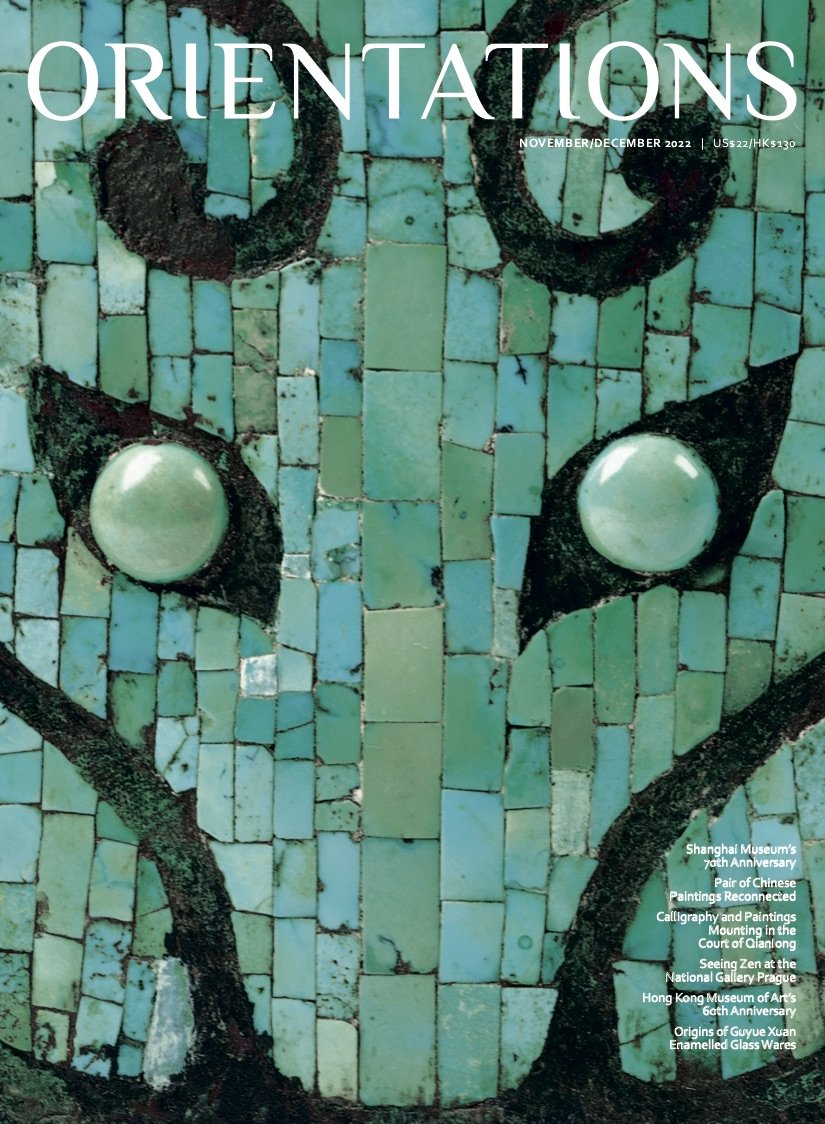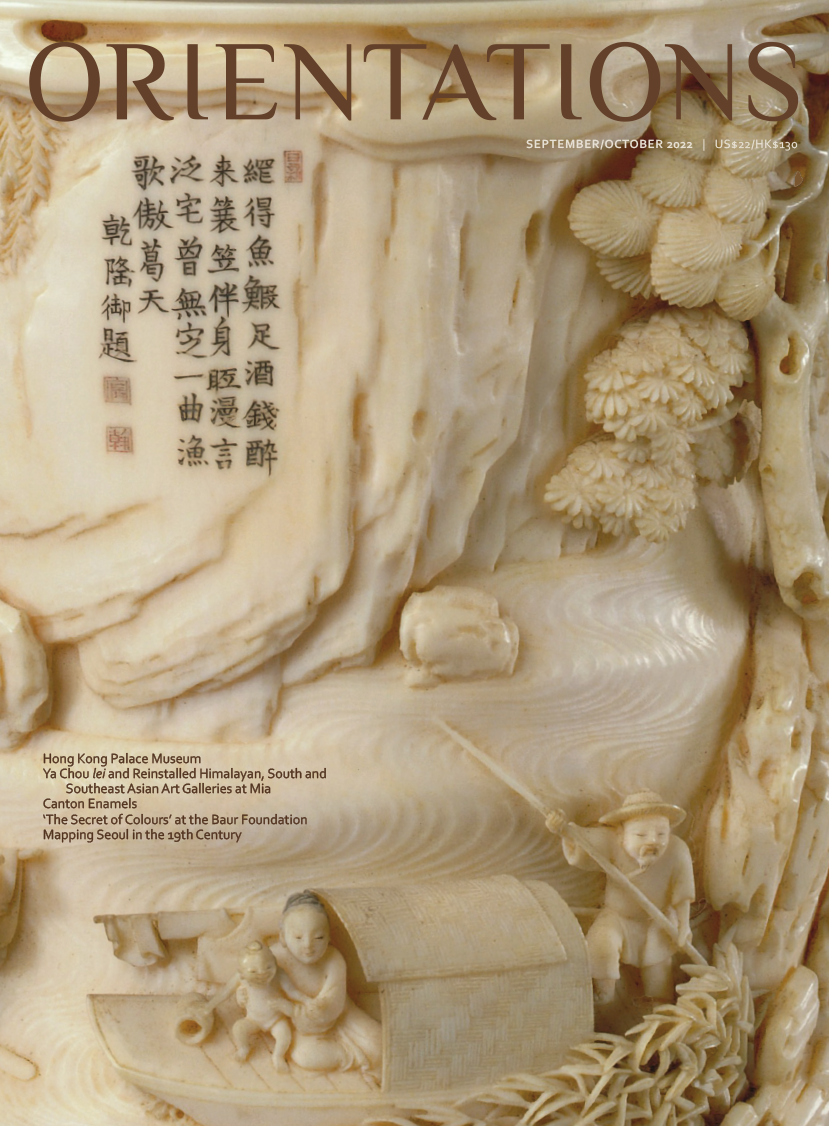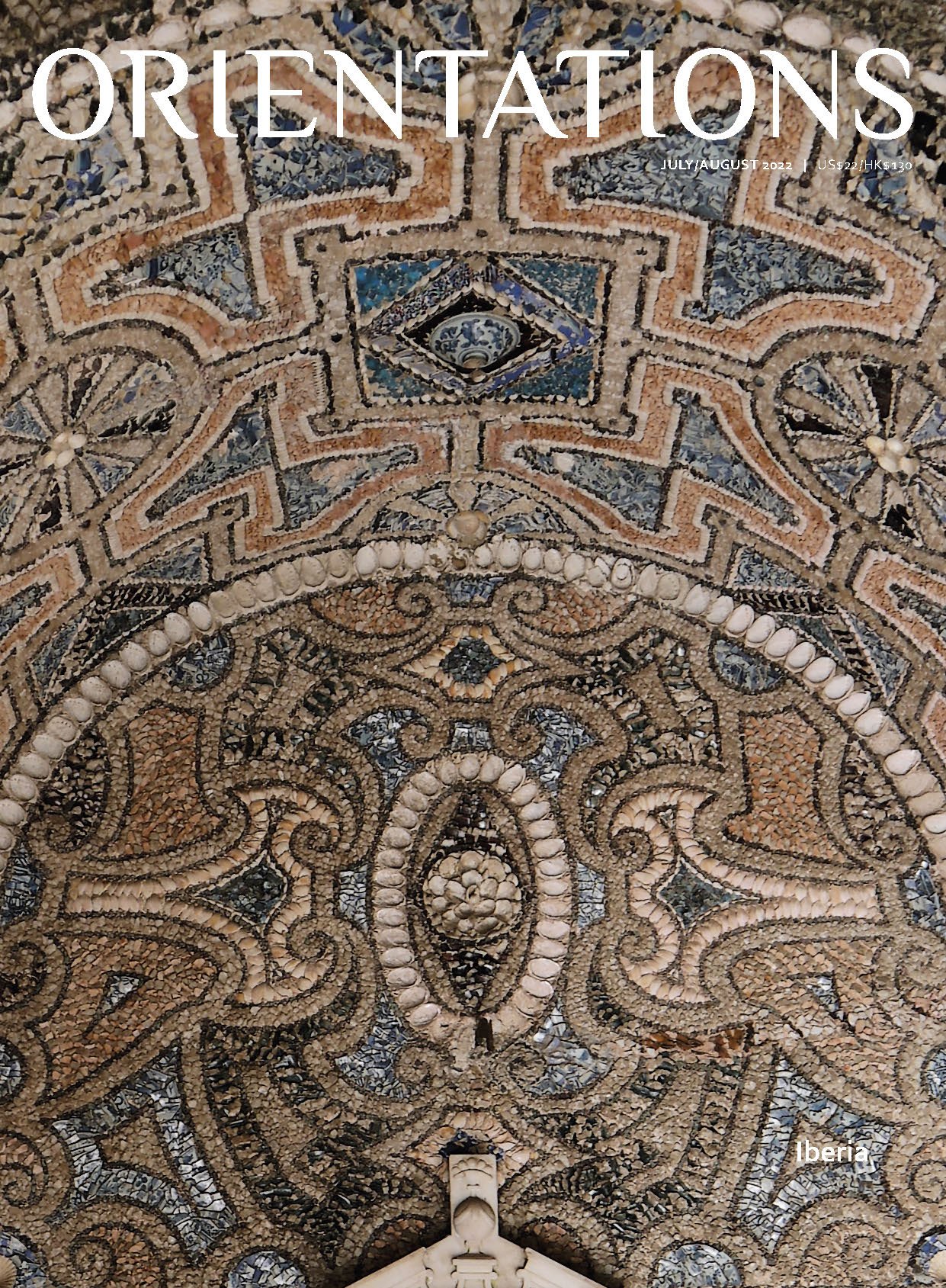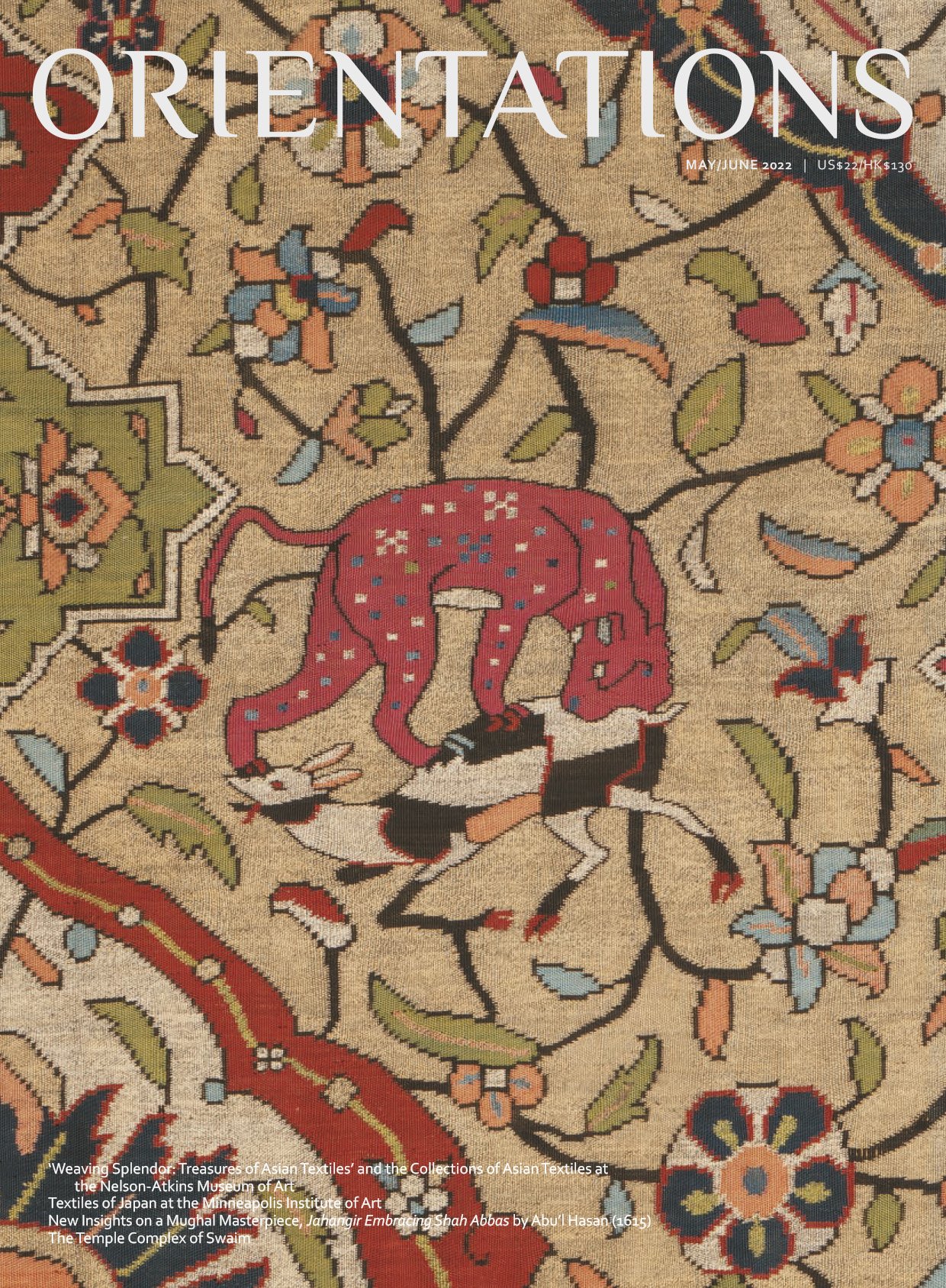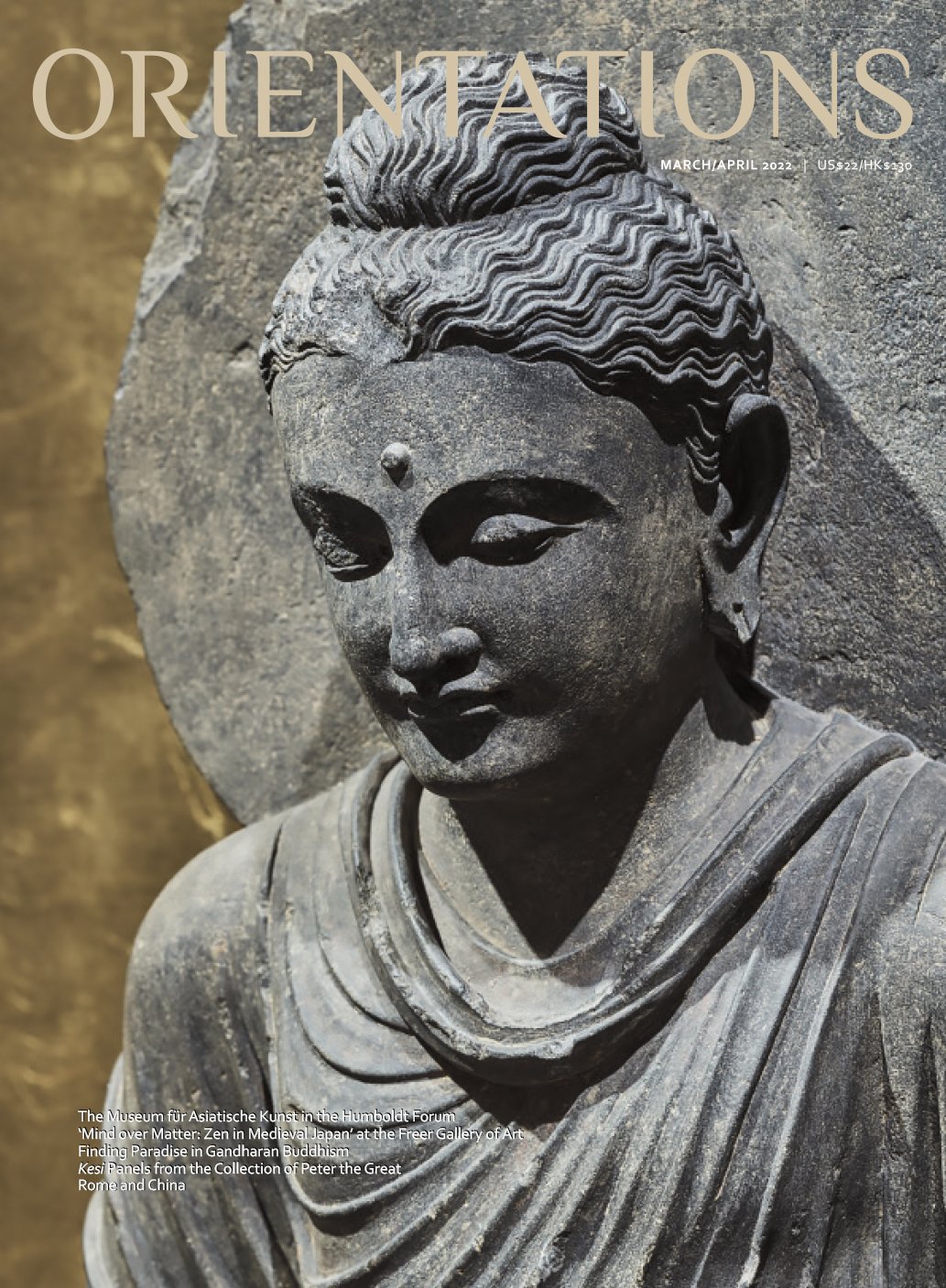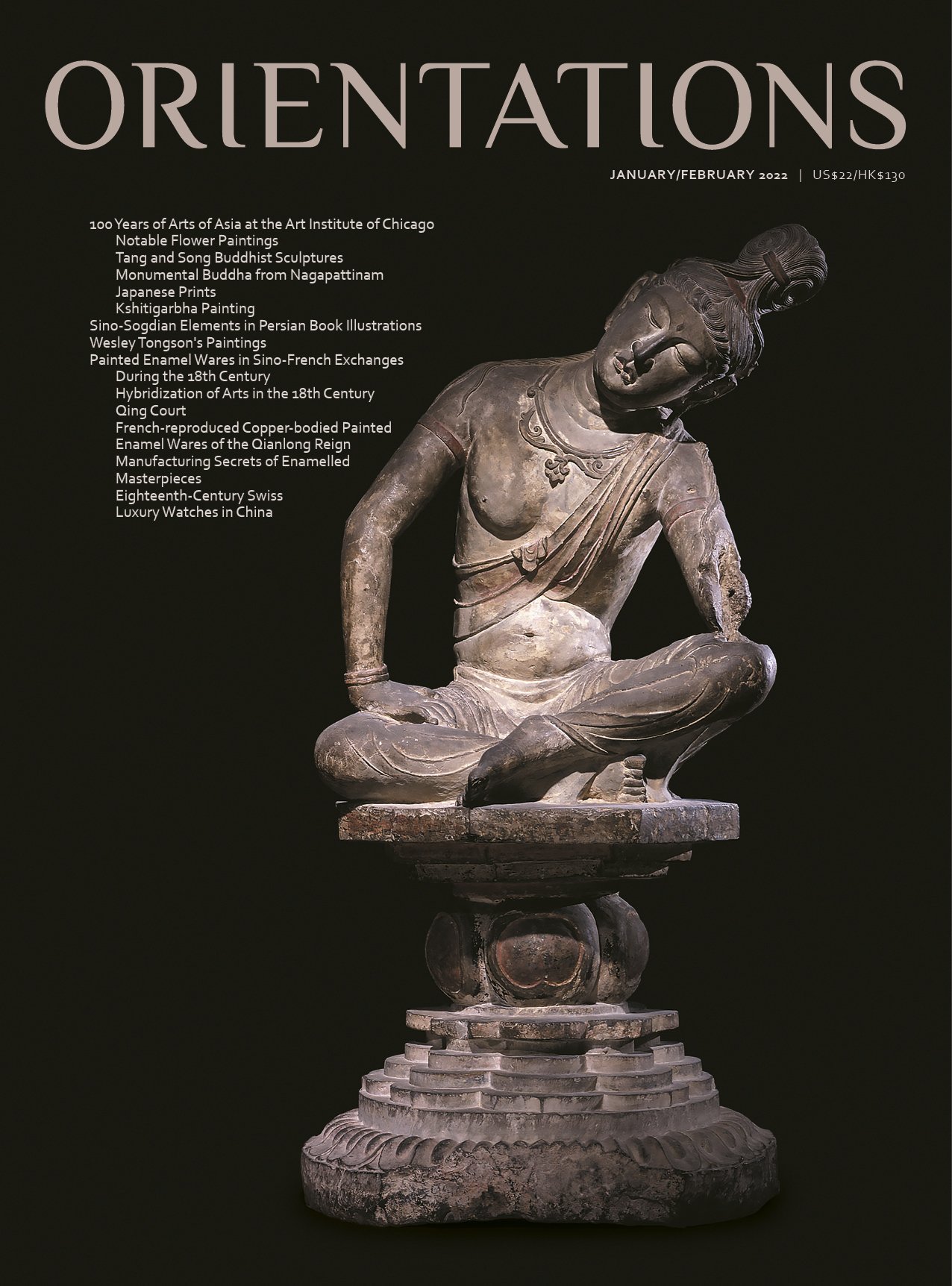 Image 1 of 1
Image 1 of 1


JAN/FEB 2022
VOLUME 53 - NUMBER 1
The Art Institute of Chicago, founded in 1879, celebrated a centenary of Asian art at the museum in 2021. Although the very first objects, a Qianlong period red lacquer tea bowl and a celadon vase, entered the collection as early as 1888, they were housed under the Department of Classical Antiquities and were looked upon as ‘curios’. A Department of Oriental Art was finally established in 1921 and included art from East, Central, and West Asia. Today, the department is the custodian of over 20,000 objects. Over the years, it first changed its name to the Department of Asian Art in 1988 and most recently, this year, to the Department of the Arts of Asia, to be more relevant to changing times and ideas; ‘Arts of Asia’ evokes the subtle implication that the museum is a ‘multivocal space’. This issue looks at highlights in the collection including Chinese flower paintings, Tang and Song dynasty Buddhist sculptures, a monumental Buddha from Nagapattinam in South India standing over 160 cm tall and weighing over 952 kgs, Japanese prints, and a Joseon period painting of Kshitigarbha, one of the most worshipped bodhisattvas in East Asia.
We also include four articles based on the findings of a joint project between the National Centre for Scientific Research (CNRS) in France and the Palace Museum, Beijing, from 2016 to 2021 focusing on the artistic, cultural, and political exchange of French enamelled objects imported into China between the 17th and mid-19th centuries. Enamelling is a Western technique of covering a surface with vitreous material made by firing powdered glass onto the substrate. The possession of European enamel objects and the subsequent adoption of the technique in China’s own artistic tradition was a symbol of universal imperial power for the Qing emperors.
To round out this issue of exchanges from East Asia to North America and from Europe to East Asia, we look at how the Yuan dynasty (1272–1368) in China and the Il-Khanid dynasty (1256–1353) in Iran cultivated cultural exchanges between East and West Asia, with Sino-Sogdian elements in Persian book illustrations a prime example of this phenomena.
FEATURES
Tao Wang. Nature and Empathy: Some Notable Flower Paintings at the Art Institute of Chicago
Colin Mackenzie. Glory Restored and Restored Glory: Tang and Song Buddhist Sculptures in the Art Institute of Chicago
Madhuvanti Ghose. The Monumental Buddha from Nagapattinam: The Many Lives of an Art Institute Icon
Janice Katz. A Centre for Japanese Prints
Yeonsoo Chee. A Journey to Salvation: Kshitigarbha Painting at the Art Institute of Chicago
Jin Xu and Taylor Chisato Stewart. Echo of a Distant Past: Sino-Sogdian Elements in Persian Book Illustrations
Yi Yi Mon (Rosaline) Kyo. Spiritual Mountains: Wesley Tongson’s Transcendence in Ink Painting
Bing Zhao. Painted Enamel Wares in Sino-French Exchanges During the 18th Century
Bing Zhao. From European Colour Pigments to Chinoiserie Images Painted Enamel Ware and the Hybridization of Arts in the 18th Century Qing Court
He Wang. French-Reproduced Copper-Bodied Painted Enamel Wares of the Qianlong Reign
Philippe Colomban. The Discovery and Comparison of the Manufacturing Secrets of Enamelled Masterpieces
Sandrine Girardier. Eighteenth-Century Swiss Luxury Watches in China
INTERVIEW
An Interview with Tao Wang One Hundred Years of the Arts of Asia at the Art Institute of Chicago (1921–2021)
REVIEWS
Xu Xiaodong. The RA Collection of Chinese Enamelled Copper: A Collector’s Version by Maria Antonia Pinto de Matos, Ana Moas, Ching-Fei Shi
VOLUME 53 - NUMBER 1
The Art Institute of Chicago, founded in 1879, celebrated a centenary of Asian art at the museum in 2021. Although the very first objects, a Qianlong period red lacquer tea bowl and a celadon vase, entered the collection as early as 1888, they were housed under the Department of Classical Antiquities and were looked upon as ‘curios’. A Department of Oriental Art was finally established in 1921 and included art from East, Central, and West Asia. Today, the department is the custodian of over 20,000 objects. Over the years, it first changed its name to the Department of Asian Art in 1988 and most recently, this year, to the Department of the Arts of Asia, to be more relevant to changing times and ideas; ‘Arts of Asia’ evokes the subtle implication that the museum is a ‘multivocal space’. This issue looks at highlights in the collection including Chinese flower paintings, Tang and Song dynasty Buddhist sculptures, a monumental Buddha from Nagapattinam in South India standing over 160 cm tall and weighing over 952 kgs, Japanese prints, and a Joseon period painting of Kshitigarbha, one of the most worshipped bodhisattvas in East Asia.
We also include four articles based on the findings of a joint project between the National Centre for Scientific Research (CNRS) in France and the Palace Museum, Beijing, from 2016 to 2021 focusing on the artistic, cultural, and political exchange of French enamelled objects imported into China between the 17th and mid-19th centuries. Enamelling is a Western technique of covering a surface with vitreous material made by firing powdered glass onto the substrate. The possession of European enamel objects and the subsequent adoption of the technique in China’s own artistic tradition was a symbol of universal imperial power for the Qing emperors.
To round out this issue of exchanges from East Asia to North America and from Europe to East Asia, we look at how the Yuan dynasty (1272–1368) in China and the Il-Khanid dynasty (1256–1353) in Iran cultivated cultural exchanges between East and West Asia, with Sino-Sogdian elements in Persian book illustrations a prime example of this phenomena.
FEATURES
Tao Wang. Nature and Empathy: Some Notable Flower Paintings at the Art Institute of Chicago
Colin Mackenzie. Glory Restored and Restored Glory: Tang and Song Buddhist Sculptures in the Art Institute of Chicago
Madhuvanti Ghose. The Monumental Buddha from Nagapattinam: The Many Lives of an Art Institute Icon
Janice Katz. A Centre for Japanese Prints
Yeonsoo Chee. A Journey to Salvation: Kshitigarbha Painting at the Art Institute of Chicago
Jin Xu and Taylor Chisato Stewart. Echo of a Distant Past: Sino-Sogdian Elements in Persian Book Illustrations
Yi Yi Mon (Rosaline) Kyo. Spiritual Mountains: Wesley Tongson’s Transcendence in Ink Painting
Bing Zhao. Painted Enamel Wares in Sino-French Exchanges During the 18th Century
Bing Zhao. From European Colour Pigments to Chinoiserie Images Painted Enamel Ware and the Hybridization of Arts in the 18th Century Qing Court
He Wang. French-Reproduced Copper-Bodied Painted Enamel Wares of the Qianlong Reign
Philippe Colomban. The Discovery and Comparison of the Manufacturing Secrets of Enamelled Masterpieces
Sandrine Girardier. Eighteenth-Century Swiss Luxury Watches in China
INTERVIEW
An Interview with Tao Wang One Hundred Years of the Arts of Asia at the Art Institute of Chicago (1921–2021)
REVIEWS
Xu Xiaodong. The RA Collection of Chinese Enamelled Copper: A Collector’s Version by Maria Antonia Pinto de Matos, Ana Moas, Ching-Fei Shi

